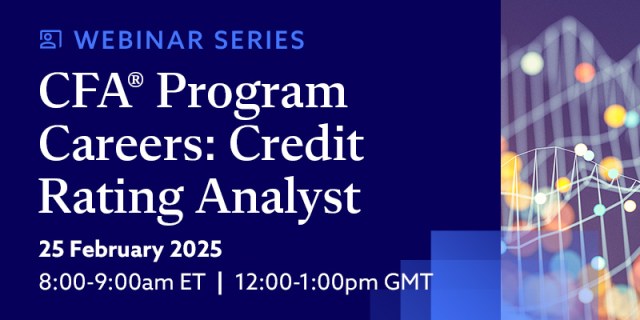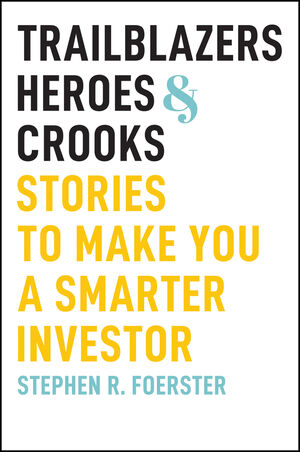Rethinking the Institutional Mandate: A Compilation from Enterprising Investor
Institutional investors are operating in an environment where traditional approaches are under strain and long-held assumptions no longer hold. Yet within these challenges lies an opportunity to rethink strategy, sharpen focus, and build more resilient, forward-looking portfolios. This curated selection of Enterprising Investor posts reflects both sides of that equation. Some contributions examine the cracks — underperformance, governance gaps, and structural inefficiencies. Others offer practical ideas for adaptation — integrating investment teams more strategically, adopting HR practices that help retain top talent, and aligning portfolios with long-term sustainability goals. Performance Pressure & Strategy Reassessment Many institutional portfolios are facing a performance reckoning. Big Funds, Small Gains: Rethinking the Endowment Playbook shines a spotlight on endowment underperformance, citing return smoothing, structural underperformance, and allocations to alternative investments. Are Institutional Investors Meeting Their Goals? Spotlight on Earnings Objectives questions whether institutions are achieving their investment goals, highlighting the use of custom benchmarks that may obscure true performance. The Alternative View: 401(k) Plans Are Better off Without Private Investments challenges assumptions around the promise of private equity in defined contribution (DC) plans — especially when simulations mask access challenges and cost realities. On the other hand, The 60/40 Portfolio Needs an Alts Infusion explores the theoretical basis for going beyond the 60/40 portfolio and considers the market conditions that could make alternative portfolio allocations useful to institutional and individual investors alike. Governance & Decision-Making Strong governance is foundational to investment success. The Unspoken Conflict of Interest at the Heart of Investment Consulting raises concerns about advisor incentives. From the archives, Investment Governance for Fiduciaries: The How and the Why is a timeless exploration of the principles of sound oversight. Great investment governance provides a defensible, repeatable, and documented process that places our beneficiary at the heart of all we do, the authors write. In another evergreen post, Choosing Investment Managers: A Guide for Institutional Investors delves into the complexities of manager selection and ongoing diligence. Structural and Operational Issues Market structure and portfolio mechanics matter. Rebalancing’s Hidden Cost: How Predictable Trades Cost Pension Funds Billions explores how transparency around trading patterns leads to value leakage. Predictable rebalancing policies expose large pension funds to front-running, resulting in billions of dollars in annual losses, the author reports. Volatility Laundering: Public Pension Funds and the Impact of NAV Adjustments exposes the gap between private asset net asset values (NAVs) and their real market value. This phenomenon is known as volatility laundering, and it can give misleading impressions of private asset volatility. Looking at the big picture, Aging Populations Demand Urgent Pension Reforms: Are We Prepared? points to the challenges and opportunities created by the world’s aging population. The author raises a red flag for governments, policymakers, fund managers, pension plans, and financial advisors. From the archives, Global Pension Funds: The Coming Storm draws on global events at the time to illustrate the implications of unrealistic return expectations and government inertia. Constructive Paths Forward Retirement Readiness in Focus: Key Actions for DC Plan Success in 2025 calls for DC plans to focus on optimizing investment strategies, reducing costs, and enhancing participant education to improve retirement readiness. The authors identify the top priorities for DC plans in 2025: target date fund selection, fee transparency, investment lineup evaluation, and staying ahead of regulatory and litigation trends. The Enterprise Approach for Institutional Investors makes the case for treating investment teams as strategic arms of the institution — not separate, siloed units. Organizations that implement investment programs in the context of their broader financial measures of success may benefit from sound investment discipline years into the future, the author suggests. What’s the secret sauce behind the Canadian pension plan system’s track record of robust returns and resilience? Retaining Top Investment Talent: Lessons Learned by Large Canadian Pension Plans outlines how leading funds have modified their HR strategies to attract and retain world-class investment talent. Two additional pieces highlight the growing emphasis on impact and long-term value: Finally, Five Quotes from Financial History to Guide Trustees provides enduring wisdom for decision-makers in an era of constant disruption. Final Thought With long-held assumptions under strain — amid demographic shifts, volatile markets, and rising stakeholder scrutiny — this is a pivotal moment for institutional investors to reassess their mandates. The traditional approach is showing its limits, from underperformance to governance gaps and operational risks. The insights in this collection highlight not just where recalibration is needed, but how institutions can lead. For investment committees, trustees, asset owners, and the investment professionals serving them, the imperative is clear: take stock, ask tough questions, and ensure that today’s strategy is built for tomorrow’s demands. source
Rethinking the Institutional Mandate: A Compilation from Enterprising Investor Read More »













